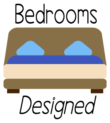Ultra Violet?
You heard that right: Ultra Violet. According to Pantone’s website, Ultra Violet communicates originality, ingenuity, and visionary thinking that “points us toward the future.” On the color, Leatrice Eiseman, the Executive Director of the Pantone Color Institute, has said:
We are living in a time that requires inventiveness and imagination. It is this kind of creative inspiration that is indigenous to PANTONE 18-3838 Ultra Violet, a blue-based purple that takes our awareness and potential to a higher level. From exploring new technologies and the greater galaxy, to artistic expression and spiritual reflection, intuitive Ultra Violet lights the way to what is yet to come.”
Reflecting Pantone’s commodifying, pandering spirit, the Associated Press has said the color “speaks to rebellion.” They posit, “the color wasn’t chosen because it’s regal, though it resembles a majestic shade. It was chosen to evoke a counterculture flair, a grab for originality, ingenuity and visionary thinking.”
We’re not buying it.
If you’re not a fan of this one, you’re not alone. Designers and media outlets have clung to this Pantone choice as a source of comedy in the first few months of 2018. At Bedrooms, Designed, we think the color is far too much; though bold, Ultra Violet commands the attention of anyone in a room. Better than last year’s vomit-tinged “Greenery,” we are very unimpressed with Pantone’s choice. The online publication Jezebel said it better than anyone on the internet:
It’s pandering to the fashion set, the music set, the wellness set, the crystal enthusiasts, and those that consult a horoscope and a natal chart before they put on a pair of shoes. In short: it’s trying to do a lot for everyone, slightly panicked, but with a smile, like a frenzied host at a party who really wants everyone to just leave, already.
